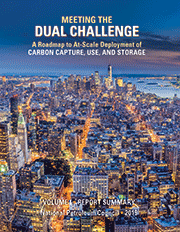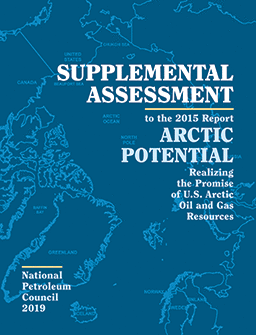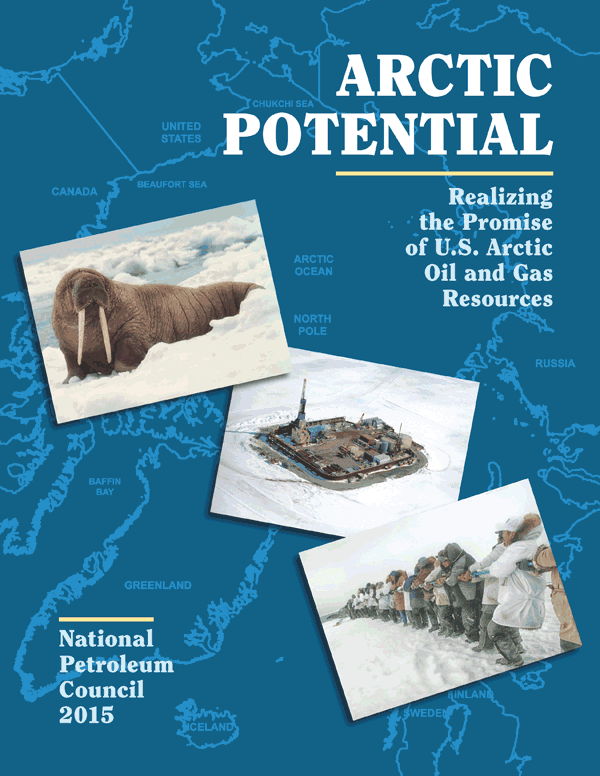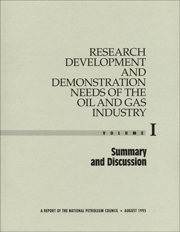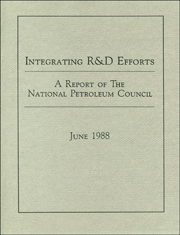Research
Meeting the Dual Challenge: A Roadmap to At-Scale Deployment of Carbon Capture, Use, and Storage (2019) Carbon capture, use, and storage (CCUS) is essential to meeting the dual challenge of providing affordable, reliable energy while addressing the risks of climate change at the lowest cost. The United States is uniquely positioned as the world leader in CCUS, with approximately 80% of the world’s CCUS capacity and substantial capability to drive widespread deployment in the United States and abroad. Building on expertise and previous research, Meeting the Dual Challenge addresses the entire CCUS supply chain and recognizes that at-scale success requires economic and operational integration across industries, harmonized local/state/federal regulations, innovation and technology development, and broad public acceptance. The report details the actions needed to deploy carbon capture technologies at scale in the United States, an essential climate mitigation technology identified in the majority of global energy outlooks. In the interest of transparency, and to help readers better understand this study, the NPC is making the study results and many of the documents developed by the study groups available to all interested parties. This comprehensive report provides interested parties with the ability to review this report and supporting materials in different levels of detail as follows: Carbon capture, use, and storage (CCUS) is essential to meeting the dual challenge of providing affordable, reliable energy while addressing the risks of climate change at the lowest cost. The United States is uniquely positioned as the world leader in CCUS, with approximately 80% of the world’s CCUS capacity and substantial capability to drive widespread deployment in the United States and abroad. Building on expertise and previous research, Meeting the Dual Challenge addresses the entire CCUS supply chain and recognizes that at-scale success requires economic and operational integration across industries, harmonized local/state/federal regulations, innovation and technology development, and broad public acceptance. The report details the actions needed to deploy carbon capture technologies at scale in the United States, an essential climate mitigation technology identified in the majority of global energy outlooks. In the interest of transparency, and to help readers better understand this study, the NPC is making the study results and many of the documents developed by the study groups available to all interested parties. This comprehensive report provides interested parties with the ability to review this report and supporting materials in different levels of detail as follows: Volume I, Summary of Findings and Recommendations, includes the report transmittal letter, outline of the entire report, preface, executive summary, roadmap for enabling the widespread implementation of CCUS at scale, a complete list of the detailed recommendations of the study, and appendices providing the study request letter, NPC rosters, and study group rosters. This volume provides two levels of summarization:
Volume II, Analysis of CCUS Deployment At-Scale, provides more detailed discussion and additional information on the study’s deployment at-scale analyses:
Volume III, Analysis of CCUS Technologies, provides an overview and detailed discussions of the technologies used in the CCUS supply chain.
Topic Papers provide a final level of detail for the reader. These papers, developed or used by the study’s Task Groups, Subgroups, and Teams, are included on the NPC website. They were used in the development of the full report. The Council believes that these materials will be of interest to the readers of the report and will help them better understand the results. The members of the NPC were not asked to endorse or approve all of the statements and conclusions contained in the topic papers but, rather, to approve the publication of these materials as part of the study process. As such, statements and suggested findings that appear in the topic papers are not endorsed by the NPC unless they were incorporated into the report. Cost Curve Model. A differential feature was to assess the costs to capture, transport, and store CO2 from all sectors and fuel types, covering the largest facilities and a total of approximately 80% of all U.S. stationary sources. Using “reference cases” and standard economic assumptions was essential to developing the cost curve, formulating recommendations, and assessing the potential impact of those recommendations on CCUS deployment at a national level. The cost assessment tool used to generate the Cost Curve will allow readers to change the cost and financial assumptions to generate their own view of costs. Printed report: View/Download report: Click here to view/download .pdf versions of each report.
Supplemental Assessment to the 2015 Report – Arctic Potential: Realizing the Promise of U.S. Arctic Oil and Gas Resources (2019) The Secretary of Energy, in coordination with the Secretary of the Department of the Interior, requested an update of the 2015 Arctic Potential report to provide views on whether the nation’s regulatory environment could be enhanced to improve reliability, safety, efficiency, and environmental stewardship. The Secretary’s request asked the NPC to focus on these key areas:
The resulting Supplemental Assessment report provides the DOE and DOI with the Council’s perspective on regulatory enhancements and other actions that support prudent development in the Arctic. It focuses on the four key areas in the Secretary’s request with an emphasis on what is new in terms of advances in technology and experience since 2015. The report identifies two new findings and affirms that the 2015 findings remain valid. The new findings are:
This report also highlights nine recommendations to address both the new and prior findings. The 2019 NPC Supplemental Assessment report is available for viewing and downloading at no charge on the NPC website (www.npc.org), along with the original 2015 report and materials. A printed copy of the report is available for purchase. (104 pages) Price: $5.00 Click here to view/download a PDF of the printed report (low resolution - 7.3 MB) Click here to download ePUB* version of the Supplemental Assessment volume (6 MB)
Arctic Potential: Realizing the Promise of U.S. Arctic Oil and Gas Resources (2015) Click here to visit Arctic Potential report website This report was prepared in response to Secretary of Energy Ernest J. Moniz’s request and provides a comprehensive study that considers research and technology opportunities to enable prudent development of U.S. Arctic offshore oil and natural gas resources. Today, there is both increasing interest in the Arctic for economic opportunity, and concern about the future of the culture of the Arctic peoples and the environment in the face of changing climate and increased human activity. Other nations, such as Russia and China, are moving forward with Arctic economic development. Facilitating exploration and development in the U.S. Arctic would enhance national, economic, and energy security, benefit the people of the north and the U.S. as a whole, and position the U.S. to exercise global leadership. Despite these benefits, there are diverse views on how to balance this opportunity with environmental stewardship. The National Petroleum Council considered these diverse views in generating the report Arctic Potential: Realizing the Promise of U.S. Arctic Oil and Gas Resources. The report assessments were conducted around two key themes:
The NPC study assessments led to seven key findings addressing:
Based on these findings, the report proposes recommendations, grouped into three broad themes:
The NPC is making the study results and many of the documents developed by the study groups available to all interested parties as follows:
EXECUTIVE SUMMARY VOLUME - includes Preface and Executive Summary (84 pages) Purchase Printed Version: Click here to view/download PDF version of the Executive Summary volume (21 MB) Click here to view/download a low-resolution PDF version of the Executive Summary volume (4.5 MB) Click here to download ePUB* version of the Executive Summary volume (15 MB) FULL REPORT VOLUME - includes Preface, Executive Summary, Chapters, and Appendices (588 pages) Purchase Printed Version: FULL REPORT VOLUME BY SECTION – PDF Click here to view/download PDF version of the Executive Summary (21 MB) Click here to view/download a low-resolution PDF version of the Executive Summary (4.5 MB) Click here to download PDF version of Part One – Prudent Development (Overview, Chapters 1-4) Click here to view/download a low-resolution PDF version of Part One – Prudent Development Click here to view/download PDF version of Part Two – Technology and Operations (Overview, Chapters 5-8) (51.4 MB) Click here to view/download a low-resolution PDF version of Part Two – Technology and Operations (Overview, Chapters 5-8) (8.8 MB) Click here to view/download PDF version of Part Three – Ecological and Human Environment Click here to view/download a low-resolution PDF version of Part Three – Ecological and Human Environment (Overview, Chapters 9-10) (3.7 MB) Click here to view/download PDF version of Appendices A-D and Acronyms and Abbreviations (5.6 MB) Click here to view/download a low-resolution PDF version of Appendices A-D and Acronyms and Abbreviation (<1 MB) FULL REPORT VOLUME BY SECTION – ePUB* Click here to view/download ePUB version of the Full Report - includes Preface, Executive Summary, Chapters, and Appendices (243 MB) Click here to view/download ePUB version of the Preface and Executive Summary (29.7 MB) Click here to download ePUB version of Part One – Prudent Development (Overview, Chapters 1-4) Click here to view/download ePUB version of Part Two – Technology and Operations (Overview, Chapters 5-8) (117.5 MB) Click here to view/download ePUB version of Part Three – Ecological and Human Environment Click here to view/download ePUB version of Appendices A-D and Acronyms and Abbreviations (3.5 MB) * ePUBs are best viewed using iBooks app on Apple iPad. Click here for free download of iBooks. Install iBooks prior to downloading ePubs files, then download ePub files directly from your iPad browser.
Research, Development, and Demonstration Needs of the Oil and Gas Industry (1995) This report makes specific recommendations on collaborative research and development and on ways that the national labs can become more user-driven in their response to the technology needs of the oil and gas industry. The study analyzes the needs of the industry, considering the near- and long-term needs of both the upstream and downstream sectors. The scope encompasses natural resource identification through the output of the refineries and gas processing facilities. In addition, the study examines the relevant capabilities of the nine Department of Energy (DOE) national laboratories and the National Institute for Petroleum and Energy Research (NIPER) as well as the role they could play in providing technical and scientific support to the industry. The role of other public and private labs is also discussed. This study is intended to be the starting point for establishing an improved process of focused oil and gas RD&D. The theme of the recommendations in the report is for the Secretary of Energy to establish a process that embodies the “new paradigm” in oil and gas RD&D-user-driven technology development. The report is presented in three volumes. Volume I contains the Council’s recommendations and the analyses supporting them. Volume II presents the summary data from the NPC’s 1995 Survey of Research and Development Needs. Volume III contains detailed information on the capabilities of the nine DOE national laboratories and NIPER. Volume I - Summary and Discussion Click here for to view/download a .pdf of the printed report (5.4 MB). Volume II - Industry Survey Appendix Click here for to view/download a .pdf of the printed report (9.4 MB). Volume III - Laboratory Capabilities Appendix Click here for to view/download a .pdf of the printed report (83.6 MB). Set of all of the above
The report provides the Council’s views on improving oil and gas recovery through improved coordination and cooperation in research and development (R&D) efforts. The study includes results of an industry survey of current and historical levels of oil and gas exploration and production research and development. In addition, the survey provides the current industry assessment of the importance of specific research topics in enhanced oil recovery and geoscience identified in earlier reports by the NPC, the Energy Research Advisory Board, and the National Research Council. The report also reviews current government-funded geoscience R&D programs that can be considered broadly related to oil and gas exploration and production. (120 pages) Price: $10.00 Click here to view/download a .pdf of the printed report. Updated 3/31/21 |
